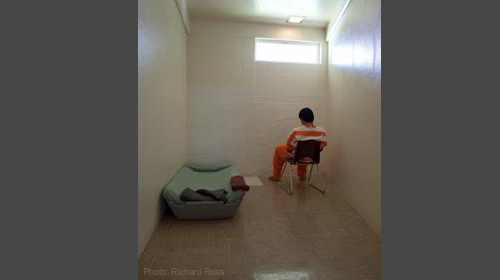50 Years after the Dream: Why Are We Filling our Jails with Kids of Color?


This week, fifty years after the March on Washington, President Obama stood on the National Mall and listed out some of the unfinished business of the civil rights movement. High up on the list: not letting our criminal justice system become "simply a pipeline from underfunded schools to overcrowded jails."
The President is right. For far too many Black, Latino and Native American kids, the justice system is like quicksand: once you step in, it pulls you in deeper and deeper.
Take Luis, who was 14 the first time he was placed on probation. His big offense? Asking another student for $2, and having the student report him for bullying. Once he was under correctional control, it became difficult for Luis to escape the pipeline. A few months later, Luis was hanging out with some friends when one of them chose to steal a few items from a store. Luis was arrested alongside his friend, charged with violating probation, and shipped off to a juvenile facility.
The facility was horrible for Luis. He had never fought in the street, but he learned to fight in the facility. They tried to medicate him without his parents' permission. And when he came home, there were no support services in place.
Given everything we know about the school-to-prison pipeline, what happened next to Luis shouldn't surprise us. The experience of being incarcerated changed him, and since his release Luis has been rearrested several times and now is incarcerated in an adult prison.
It doesn't have to be this way. When kids stumble, we have a chance to pick them up. Forcing them under correctional control pushes them down.
The scales of the justice system are as firmly weighted against young people for color as they were 50 years ago, during the first March on Washington. Discriminatory disciplinary practices are the entry point into a racially inequitable juvenile justice system, in which youth of color experience harsher treatment at each stage of the system.
We heard Attorney General Eric Holder give a major speech a few weeks ago about how too many people are in prison for too long. We know that lots of states have worked to reduce growth in their incarceration populations ÔÇô and most have made progress in reducing the overall number of kids behind bars. But there's one significant lag: the disproportionate confinement of children of color in these states has actually worsened.
Contrary to public perceptions, the worst racial disparities for African American children exist not in the South, but in the Midwest and Northeast. For example, in New Jersey, African American youth are 4.5 times more likely than white youth to be incarcerated in a state youth prison. In Wisconsin, African American children made up only nine percent of the overall child population but were 73 percent of the children committed to the state's juvenile correctional facilities in 2012.
The disproportionate incarceration of Native American and indigenous youth is just as severe. Native American youth comprise 13 percent of South Dakota's population but represent over 40 percent of the state's incarcerated youth. Similarly, Native Alaskan youth are less than 18 percent of the overall population but make up over a third of the young people in the Alaska's juvenile correctional facilities. Native Hawaiian children are 12 percent of the general population, but they comprise nearly two-thirds of Hawaii's incarcerated youth population.
So what should the President do, what can we do to build a justice system that treats all children equally?
We should expand promising approaches on the community level. We need to confront institutional bias at each stage of the justice system and implement strategies to level the playing field for youth of color. Most importantly, we need to ensure that communities of color have the resources and capacity to divert young people from courts and lock-ups. Only then will be able to pull able to pull young people of color out of the quicksand and guarantee that others never fall in.
Learn more about the juvenile detention and other civil liberties issues: Sign up for breaking news alerts, , and .


